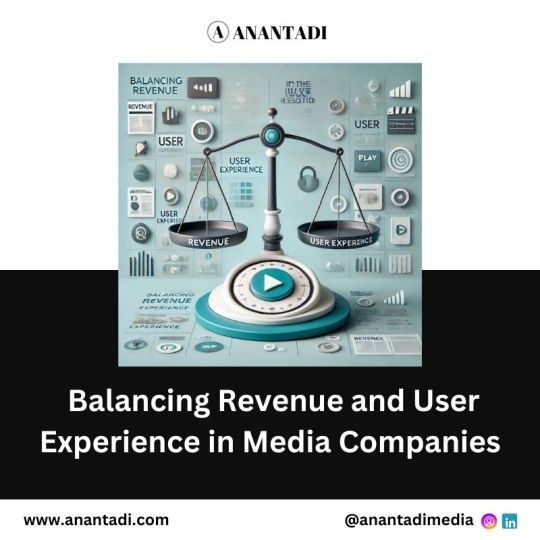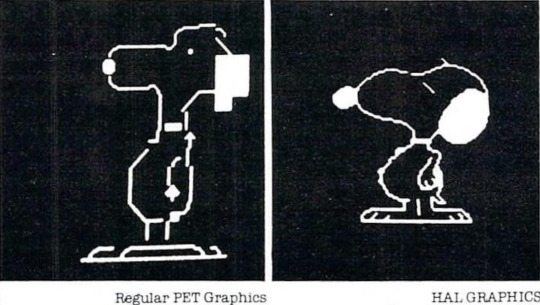#Ad Tech
Explore tagged Tumblr posts
Text
2 notes
·
View notes
Text
Digital publishing is a rapidly growing industry, yet profitability from quality content in today's world requires more than straightforward ad placements. For publishers seeking access to quality demand and the highest-paying environments at scale, Google Ad Exchange—also known as Google ADX—is a performance-driven path to profitability.
0 notes
Text
How Do Chennai Agencies Measure Performance Marketing Success?
In the fast-paced digital world, Performance Marketing in Chennai has become a key strategy for brands aiming to achieve measurable results. From lead generation to sales conversions, agencies in Chennai focus on data-driven tactics to track and optimize every campaign. But how exactly do they measure success?

One of the top agencies in this space, Alok Infotech, uses a combination of analytics tools, KPIs, and ROI metrics to evaluate campaign effectiveness. Metrics like Cost Per Click (CPC), Cost Per Acquisition (CPA), and Return on Ad Spend (ROAS) are closely monitored to ensure every marketing rupee delivers maximum value.
Performance Marketing in Chennai is not just about getting traffic—it's about converting that traffic into meaningful results. Agencies like Alok Infotech emphasize conversion tracking, audience targeting, and continuous A/B testing to refine their strategies and improve performance over time.
What makes Alok Infotech stand out is their commitment to transparency and results. By providing clients with detailed performance reports and insights, they help brands scale confidently in a competitive digital landscape.
Whether you're a startup or an established business, choosing experts in Performance Marketing in Chennai like Alok Infotech can make all the difference in achieving your marketing goals.
If you want more information visit this website Alok Infotech Contact us: 9176094141 Facebook: https://www.facebook.com/alokinfotechchennai/ LinkedIN:https://www.linkedin.com/company/alokinfotech/ Instagram:https://www.instagram.com/alokinfotechchennai/ Youtube :https://www.youtube.com/@alokinfotech6992
0 notes
Text
Best Cloaker for 2025? The Real Battle: Fingerprinting vs IP Cloaking

Cloaking isn’t dead. But old-school IP cloaking? Might as well be.
Affiliate marketers, media buyers, and grey-hat advertisers are switching to fingerprinting cloaking to stay ahead in 2025.
Why?
Because ad platforms like Facebook and Google now use residential IPs, stealth bots, and AI reviewers that IP cloaking can’t catch.
Here’s the short version:
IP Cloaking = Basic filtering, outdated
Fingerprinting = Advanced stealth, real-time protection
I just broke this down in a no-fluff blog that compares both, shows what works (and what doesn’t), and helps you pick the best cloaker for aggressive campaigns in 2025.
🔗 Read the full blog
#cloaking#affiliate marketing#facebook ads#media buying#ad tech#digital marketing#fingerprinting#ppc strategies#ad cloaker#performance marketing
0 notes
Text
Viant Technology: Could Bitcoin Adoption Boost Shareholder Value?
According to Eric Semler, chairman of Semler Scientific, Viant Technology (DSP), an ad tech firm, could significantly increase shareholder value by integrating a Bitcoin (BTC) treasury strategy. Semler Scientific, a scientific-equipment manufacturer, previously adopted a similar Bitcoin-buying policy.
0 notes
Text
Exploring the Benefits of Integrating DSP and SSP for Effective Ad Campaigns
Digital advertising continues to reshape marketing strategies worldwide. The combination of DSP and SSP technology has created new opportunities for both advertisers and publishers.
These platforms work together to streamline the buying and selling of digital ad space, making campaigns more efficient and results more measurable.
The rapid growth of programmatic advertising has made understanding these systems increasingly valuable for marketing professionals.

Understanding the Basics
A Demand-Side Platform (DSP) works like a smart purchasing system for advertisers. It automatically finds and buys ad space across many websites based on the advertiser's needs.
The platform handles complex decisions about where ads should appear and how much to pay for each placement. This automation saves time while improving targeting accuracy.
Meanwhile, Supply-Side Platforms (SSP) help website owners sell their ad space more effectively by connecting them with multiple buyers at once.
Publishers can set specific criteria about acceptable ads and minimum prices, ensuring their space sells at fair market rates. SSPs also provide detailed reporting about which types of ads perform best on different parts of their websites.
How These Systems Work Together
The integration of DSP and SSP creates a more efficient advertising marketplace. Advertisers can quickly find and purchase relevant ad space, while publishers can sell their available spots to the highest bidders.
This automated process happens in real-time, saving time and resources for everyone involved. The transparency of this system helps both sides make better decisions about pricing and placement.
When these platforms work together properly, the entire advertising process becomes more streamlined. Advertisers spend less time managing multiple platform relationships, and publishers gain access to a wider pool of potential buyers.
The real-time nature of these transactions means both sides can adjust their strategies quickly based on performance data.
Benefits for Advertisers
Advertisers gain several advantages when using an integrated DSP and SSP approach. They can reach specific audiences more precisely and adjust their campaigns quickly based on performance.
The system also helps control costs by automatically bidding appropriate amounts for each ad placement. This precise control over spending and placement helps maximize the return on advertising investments.
Key advantages include:
Broader reach across multiple platforms
Better targeting capabilities
Automated bidding process
Real-time performance tracking
Cost-effective campaign management
Value for Publishers

Website owners and content creators benefit significantly from SSP integration. The platform helps them earn more from their ad space by connecting with multiple potential buyers simultaneously.
Publishers can set minimum prices and choose which types of ads appear on their sites. This control helps maintain site quality while maximizing revenue potential.
The automated nature of SSPs also reduces the time publishers spend managing advertising relationships. Instead of dealing with multiple ad networks individually, they can set their preferences once and let the system handle the details.
This efficiency allows publishers to focus more on creating quality content for their audiences.
Making Smart Decisions
Campaign Planning
Good preparation leads to better results. Advertisers should know their target audience and budget limits before starting campaigns. This information helps the DSP make better decisions when bidding on ad space through various SSPs.
Taking time to understand audience behaviors and preferences helps create more effective targeting strategies.
The planning phase should also include clear goals and success metrics. Whether the focus is on brand awareness, direct sales, or lead generation, having specific targets helps guide campaign setup and optimization.
Regular review of these goals ensures campaigns stay on track and deliver desired results.
Revenue Strategy
Publishers need to understand what makes their ad space valuable. Setting the right prices and knowing their audience helps attract quality advertisers.
Regular analysis shows which strategies work best for increasing revenue. This understanding comes from monitoring both direct ad sales and programmatic performance.
Smart pricing strategies take into account factors like seasonal trends, audience demographics, and content topics. Publishers who understand these elements can adjust their SSP settings to maximize revenue without compromising user experience.
This balance between revenue and user satisfaction creates sustainable long-term value.
Common Challenges
Managing Information
Handling user data requires careful attention to privacy and security. Both systems must protect sensitive information while still providing useful targeting options for advertisers. This balance becomes more complex as privacy regulations continue to evolve worldwide.
Modern DSP and SSP platforms include features to help comply with various privacy requirements. These tools help manage consent, protect user data, and ensure advertising practices meet current standards. Regular updates keep these systems current with changing regulations.
Technical Setup
Connecting these platforms takes technical knowledge. Most organizations work with experienced providers to ensure everything runs smoothly. The initial setup process requires careful attention to detail to prevent future problems with campaign delivery or reporting.
Proper configuration includes setting up tracking pixels, establishing secure data connections, and testing various campaign scenarios. This groundwork helps prevent technical issues that could affect campaign performance later. Regular maintenance ensures these connections continue working correctly over time.
Moving Forward

The technology behind DSP and SSP continues to improve. New features focus on preventing fraud, improving targeting, and making campaign management easier.
These changes help create better results for both advertisers and publishers. Artificial intelligence and machine learning advance these capabilities further, making ad placement more precise and efficient.
Starting Out
Many organizations begin with either a DSP or SSP before expanding their approach. Starting small allows teams to learn the basics before taking on more complex strategies.
This gradual approach often leads to better long-term results. Understanding one side of the system thoroughly helps make integration smoother when adding new components.
Tracking Results
Clear measurements help show if campaigns work well. These numbers guide decisions about future advertising strategies:
Campaign reach and engagement
Cost per conversion
Ad placement quality
Revenue generation
Audience response rates
Best Practices
Regular Review
Checking how campaigns perform helps catch and fix problems early. Weekly reviews of key numbers keep campaigns on track and highlight areas for improvement. These reviews should look at both overall performance and specific campaign elements to identify what works best.
Performance analysis should consider multiple factors beyond basic metrics. Understanding how different audience segments respond to various ad formats and messages helps refine future campaigns. This detailed analysis leads to more effective advertising strategies over time.
Choosing Partners
Finding the right DSP and SSP partners matters. Consider factors like available audiences, pricing, and support when selecting platforms to work with. The quality of these relationships often determines how successful advertising efforts become.
Good partners provide both technical support and strategic guidance. They should offer clear documentation, responsive support teams, and proven track records of helping similar organizations succeed.
This support becomes particularly valuable when exploring new advertising opportunities or tackling technical challenges.
Looking Ahead
Digital advertising keeps changing, but connecting advertisers with audiences remains the core goal. As technology improves, this process becomes more refined and effective. The integration of DSP and SSP platforms continues to evolve, offering new opportunities for both advertisers and publishers.
Final Thoughts
The integration of DSP and SSP technology creates real benefits for digital advertising. Success comes from understanding how these systems work together and using them strategically.
Organizations that take time to learn and adapt often see the best results from their advertising efforts.
The future of digital advertising looks promising as these technologies continue to mature and offer new capabilities for reaching the right audiences at the right time.
#DSP (Demand-Side Platform)#SSP (Supply-Side Platform)#Digital Advertising#Ad Tech#Marketing Automation
0 notes
Text
QNews takes on Google in David and Goliath legal battle
New Post has been published on https://qnews.com.au/qnews-takes-on-google-in-david-and-goliath-legal-battle/
QNews takes on Google in David and Goliath legal battle
QNews and independent local newspaper The Sydney Times have joined forces to take on multinational technology company Google/Alphabet Inc. over alleged anticompetitive practices in the advertising technology (ad tech) sector.
The publications are leading a class action against the global corporate behemoth in a David and Goliath battle being funded by British financial institution Woodsford and run by Australian law firm Piper Alderman.
The class action aims to recover compensation for Australian-based website and app publishers who have suffered financial losses due to Google’s alleged misuse of market power in the ad tech sector.
The legal claim centres on four Google ad tech tools: Google Ad Manager, Doubleclick for Publishers, Google Ad Exchange and Google AdSense/AdMob.
QNews publisher Richard Bakker said the class action was not just about money but also fairness in the marketplace, with Google having a stranglehold on the ad tech sector.
“I’ve decided to take on this role because Google’s dominance in the ad tech market has created an environment that’s not just unfair but also detrimental to smaller publishers and media outlets,” Bakker said.
“Their practices stifle competition and leave businesses like mine with little choice but to accept unfavourable terms,” he said.
“It’s time to level the playing field and ensure that innovation and diversity in media can thrive without being crushed under monopolistic practices.”
Bakker said there was a lack of alternatives to the ad tech “ecosystem”, meaning Google effectively controlled the ad tech space in Australia,
Sydney Times publisher Axel Ritenis agreed, calling Google “a law unto themselves” operating in a “wild west environment”.
“One of the primary problems is that Google’s functions and operations are quite opaque; there are these algorithms being used and nobody really understands how their systems work, except for them,” Ritenis told QNews.
“This class action is based on the Trade Practices Act (now known as the Competition and Consumer Act) and our objection to Google relates to fair trading, monopolisation and restraints on trade,” he said.
“Google ads are used by thousands of companies in this country, from small owner-operated businesses up to corporate entities. Because Google controls the space, people have no alternative but to use Google for their advertising.”
A corporate leviathan
As of December 2024, Google/Alphabet Inc. had a market capitalisation of AUD $3.671 trillion, making it the fifth most valuable company in the world.
Economically, the company is larger than Australia, as well as most G20 nations, with only the GDPs of the USA, China, Japan and Germany exceeding Google/Alphabet’s market capitalisation in size.
Bakker said he was not afraid of going head-to-head with one of the world’s largest corporate entities.
“Fear should not prevent us from fighting for what’s right. By coming together, we can amplify our voices and stand a better chance against monopolistic practices,” he said.
Ritner acknowledged that some publishers may be hesitant to join the class action due to Google’s power.
“A lot of publishers are intimidated and scared to take a stand. There is the potential for search traffic to be impacted. I’m not suggesting that Google would ‘punish’ them for joining the class action, but I guess that’s the concern for some publishers, as they get a lot of traffic to their sites through Google,” Ritner said.
“Google has power analogous to a government. They should not have that level of power.”
Well-established precedents
Piper Alderman partners Lillian Rizio and Greg Whyte said that while the affair seemed like a David and Goliath battle, they believed the class action had a strong chance of success, “for the simple reason of the overwhelming merit of the claim”.
“The issues it is raising have been the subject of numerous regulatory findings, both in Australia and overseas,” they said.
“The issues being raised in this case are not novel. They are well-established.”
On 4 December, the Australian Competition and Consumer Commission (ACCC) released a statement outlining their inquiry into digital platform services in Australia and their impacts on competition and consumers.
While the QNews–Sydney Times class action is the first of its kind in Australia, Piper Alderman said it was agitating the same issues and raising the same practices as regulatory proceedings in overseas jurisdictions such as Canada and several European nations.
“We are very grateful to QNews and to The Sydney Times for stepping forward to act as lead applicants in this very important case for the publishing industry in Australia,” they said.
Where to now?
Rizio and Whyte said the class action would now proceed through court processes to trial, if it does not settle beforehand.
“We expect the litigation to be hard fought and take a couple of years before reaching a conclusion.
“The ad tech supply chain involves complicated technology and the case will undoubtedly require expert economic testimony in order to define the markets and to establish Google’s significant market power in those markets.”
Publishers wishing to join the class action can register their interest at www.googleadtechaction.com.au.
#ACCC#ad tech#advertising technology#Alphabet Inc#Australian Competition and Consumer Commission#Axel Ritenis#class action#Doubleclick for Publishers#Google#Google Ad Exchange#Google Ad Manager#Google AdMob#Google AdSense#Greg Whyte#Lillian Rizio#Piper Alderman#QNews#Richard Bakker#Sydney Times#Woodsford
0 notes
Text
TLDR: Your TV is spying on you
Lina Khan's FTC has really been doing it's job for the last few years. Keep it up.
0 notes
Text
Learn more about #adtech benefits to the #advertising industry and how it is revolutionizing the #adtech world -https://www.rishabhsoft.com/industry/adtech-software-development
0 notes
Text

In today’s digital age, media companies face the challenge of balancing revenue generation with providing a seamless user experience. Here are some strategies to achieve this balance: 1.Optimize Ad Placement: Ensure ads are strategically placed to avoid disrupting the user experience. Non-intrusive ad formats like native ads can blend seamlessly with content. 2.Improve Page Load Speed: Fast-loading pages enhance user satisfaction and reduce bounce rates. Optimize both content and ads to load quickly. 3.Personalized Content: Use data analytics to deliver personalized content and ads. This increases engagement and makes ads more relevant to users. 4.Diversify Revenue Streams: Explore alternative revenue models such as subscriptions, affiliate marketing, and e-commerce to reduce reliance on ads. 5.User Feedback: Regularly gather user feedback to understand their preferences and pain points. Use this data to refine your ad strategy and improve user experience. By implementing these strategies, media companies can create a win-win situation where revenue goals are met without compromising user satisfaction.
0 notes
Text

snoopy used as an example of a character generated by the hal pcg 6500, advertised in compute! magazine, september/october 1980.
#compute magazine#snoopy#archive.org#pages#ads#magazine clippings#magazines#80s#peanuts#charles m schulz#tech#computer programming
2K notes
·
View notes
Text
The Rise of Retail Media Networks in Programmatic Advertising
In 2025, the AdTech world is seeing a major power shift. Brands aren’t just buying media from traditional publishers anymore, they’re turning to retailers themselves. From Amazon and Walmart to niche eCommerce platforms, Retail Media Networks (RMNs) are becoming the fastest-growing segment of programmatic ad spend.
As more retailers step into the role of media owners, we’re witnessing a strategic overlap between commerce, content, and advertising. With access to robust first-party data, retailers are uniquely positioned to serve programmatic ads that are both highly relevant and performance-driven. This evolution is creating new opportunities for adops teams, increasing CPMs, and unlocking untapped ad revenue across multiple CPM device types — from mobile to smart TVs to in-store digital signage.
Why Retail Media Networks Are Exploding
Retailers already know what their customers buy, how often they shop, and what items are frequently bundled. This goldmine of data allows them to offer advertisers unparalleled precision when it comes to targeting and measurement, far beyond what traditional third-party cookies ever could.
At the same time, SSPs are adapting to support these new retail-based marketplaces. They’re integrating inventory pipes into self-serve platforms and giving CPG brands and agencies the tools to run campaigns across web, app, and even connected shelf screens.
What This Means for the Future of AdTech
Retail media is no longer an add-on, it’s becoming a core component of digital strategy. Expect more direct deals between brands and retailers, greater investment in on-site ad units, and enhanced creative formats optimized for conversion.
Publishers should take note, too. The same technologies powering retail media, like dynamic product ads, contextual placement, and AI-driven targeting, are being adapted for wider use across premium web and app environments.
0 notes
Text
Digital publishing is a rapidly growing industry, yet profitability from quality content in today's world requires more than straightforward ad placements. For publishers seeking access to quality demand and the highest-paying environments at scale, Google Ad Exchange—also known as Google ADX—is a performance-driven path to profitability.
0 notes
Text

#2000s#2000s tech#2000s futurism#early 2000s#2000s fashion#y2k futurism#blue#blue cybercore#cybercore#cyberpunk#techno pagan#y2k aesthetic#y2k nostalgia#y2k moodboard#cyber y2k#old magazine#old ads#retro futurism#retro fashion#00s#00s aesthetic#nostalgia#00s nostalgia#cybercore aesthetic#cyber aesthetic#technocore#blue and white#vintage fashion#retro tech#old tech
2K notes
·
View notes
Text
Why You Should Be Cloaking in 2025 (If You’re Not Already)
Running aggressive offers on Facebook or Google? You’ve probably been hit with a sudden account ban or a flagged landing page. That’s where cloaking comes in.
It’s not about tricking platforms — it’s about protecting your campaigns from bots, reviewers, and junk traffic.
Real-world cloaking in 2025 looks like this:
Showing U.S. users a skincare offer, but redirecting Asian traffic elsewhere
Serving bots and crawlers a clean, policy-compliant version
Blocking flagged IPs from reviewer lists
Using real-time tools like TrafficShield to dodge bans before they happen
No, it’s not black hat — if you’re using it to segment, not deceive. The difference is in execution. The best affiliates use cloaking to align with ad policies while still scaling big.
If you’re still getting ad rejections or seeing weird spikes in bot traffic, your cloaking setup might be outdated — or missing entirely.
Want to see how pros do it? Full breakdown here
#affiliate marketing#digital marketing#facebook ads#google ads#media buying#cloaking tips#ad tech#marketing strategy#traffic optimization#seo tricks
0 notes
Text
YOOOOO CHECK THIS SHIT OUT I FOUND BATTERY-OPERATED AM/FM RADIO HEADPHONES

I’M NEVER USING WIFI DATA SPOTIFY ITUNES YOUTUBE MUSIC APP SHIT OUTSIDE MY HOUSE EVER AGAIN
#FUCK YEAH#I HATE APPS I HATE APPS I HATE RENTAL MEDIA#there was an ancient battery in it but it didn’t explode or corrode or ANYTHING so she’s just a bit dusty#Needs new padding and has a weird glue stain on one side but otherwise GOLDEN#OG WIRELESS HEADPHONES BAYBEE#like yeah there’s ads on the radio but there’s ads everywhere at least these are local businesses#God I hope I can make them work#I’m so excited#This is the first time I’ve encountered shit from my childhood and sincerely felt like we moved backwards tech wise#I love you analog media I love you radio stations I love you shit that doesnt rely on the internet for fucking everything#Oh no I’m becoming that weird old man in the woods
3K notes
·
View notes